https://www.youtube.com/watch?v=_P1B7PxAwk0
The Last SOURDOUGH STARTER RECIPE You Ever Need (updated 2022)
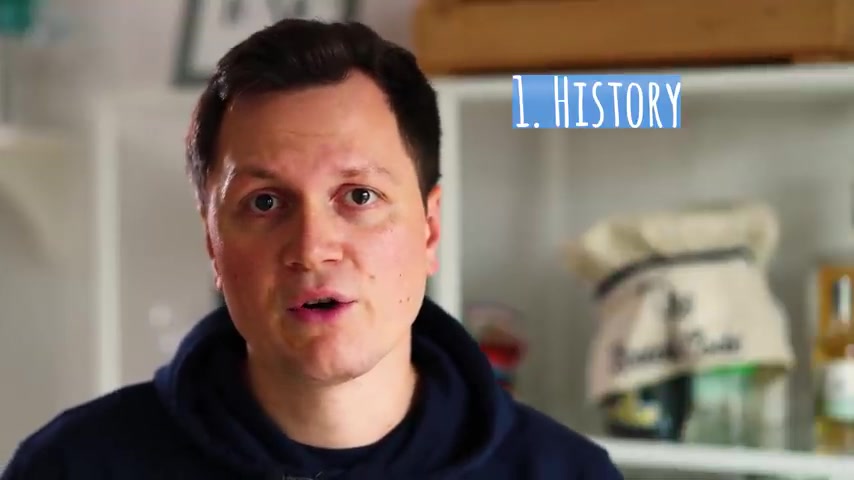
In this video , you learn how to make a super active sourdough starter .
After years of baking and interviewing many leading bread making experts .
I present to you all the knowledge that you need to master making and baking with the sourdough starter .
And these are the topics that we will be covering in this video for your convenience .
I added chapters to this video as well .
So you can skip ahead to the parts that interest you the most .
First , we'll be talking about the history of sodo starters .
Then I'll explain to you in detail what a so stutter is that gives you the basis and then I'll show you how you actually make a starter .
Many recipes .
Tell you wait seven days , but I'll show you exactly when your stutter is ready to be used to make things a little bit more .
Awesome .
I wanna show you my favorite trick next .
And then let's get our hands dirty .
We'll be making the first sourdough bread .
Then now that you made your first bread , let's talk about starter maintenance .
How do you prepare for the next bread afterwards ?
I'll be giving you a few more resources that you can continue to study on your Sardo Jour .
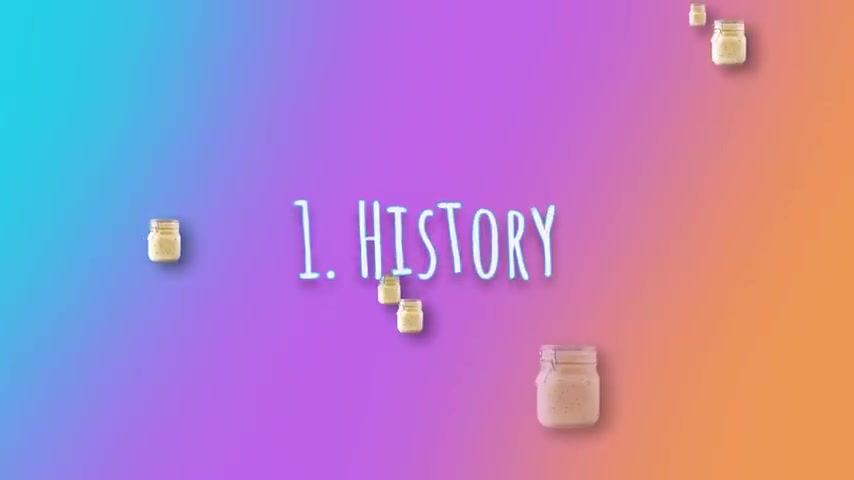
After watching all this , you will definitely be a sodo stutter master and to finish things off , I have a special surprise waiting for you .
At the end of this video , scientists have discovered very old sourdough bread .
The oldest one as far as I know is coming from Switzerland right now .
But the most popular story is the story of a lady making bread in Egypt .
She took her daughter to the Nile River and had to head home for urgent matters .
She returned a few days later just to find out that her bread has suddenly become very puffy , very light .
It also had a funky smell to it .
She would take that bread , she would bake that bread .
And afterwards , she was surprised because the taste of the bread had improved .
Also , the bread was much more fluffy than before .
So she kept doing the same thing and what she discovered was wild yeast and wild bacteria .
The first sourdough .
Now whether this story is true or not , I don't exactly know , but it sounds nice .
What is a stutter ?
A stutter is a unique composition of wild yeast and bacteria organisms .
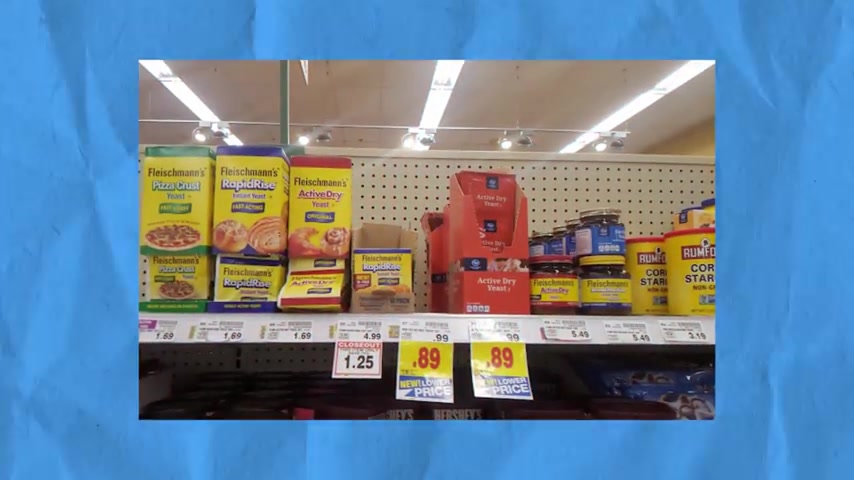
They live everywhere on fruits , on your skin and on grains such as wheat , rye ammer , pretty much everywhere .
The yeast you buy in the supermarket today is an extract of some of the strongest strains of yeast .
However , in nature , the yeast very often lives in symbiosis with the lactic and acetic acid bacteria .
The yeast makes your dough fluffy , the bacteria makes it sour .
The sourness has a pickling effect and gives your Sardo the unique flavor .
The yeast and bacteria coexists in a careful balance and harmony .
What makes sourdough special is that every starter is unique .
You likely have cultivated different strains of wild yeast and bacteria than I do over time .
Your starter is going to become better at fermenting flour .
That's why making sourdough bread is a little more challenging than plain yeast based bread .
But don't worry , I got you covered and I will give you all the information you need to succeed at making delicious sourdough bread .
Making a sourdough stutter is so super simple .
All you need to have is around 1 kg of flour .

That should be a whole wheat , whole rye , whole spilled whole emer whole iron corn .
It actually also works with gluten free flowers , just something whole you want the outside of the grain to still be there .
The second tool I recommend you to have is a scale .
You could of course also eyeball everything , but especially if you're getting started .
A digital scale makes things so much easier .
It's gonna take a little bit of time probably around 2 to 3 minutes per day and it it takes a couple of days .
But it's really that simple .
Once you make your starter , you no longer have to buy yeast at the supermarket you can use your starter starter for everything and it stays good for years .
I'm going to be showing you a couple of flow charts in these videos because I'm an engineer and we love flow charts .
So let's get into it .
Are you ready ?
You're about to make the most amazing stutter .
And it's so simple on day one , you mix 50 g of flour , 50 g of water and you stir on day two , I get a new clean jar .
I take around 50 g of the mixture from day one .
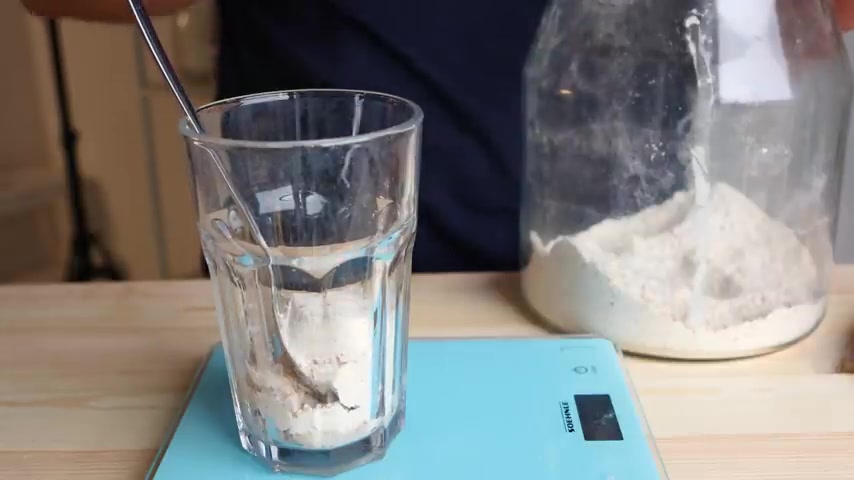
And then I'm taking another 50 g of flour and another 50 g of water .
24 hours later , your starter might have increased a little bit in size already , but you still might have bad microorganisms inside the full process is just gonna take a little bit longer .
So repeat the same thing again , take 50 g of the previous day mix again with 50 g of water , 50 g of flour , stir everything together again , discard the rest .
Now , the starter could already in theory be ready after five days , but it might also take 10 days for every day until it is ready .
You will repeat exactly what you just learned .
Now , when is it actually ready ?
Most recipes tell you wait X days , but that doesn't work .
Let me show you exactly how you know that your sourdough stutter is ready .
It's very simple .
When is your starter ready ?
This is where many new bakers fail .
They use the sourdough starter too early or too late .
And let me show you exactly how , you know , when it's ready , the typical time frame is probably around five days to 10 days .
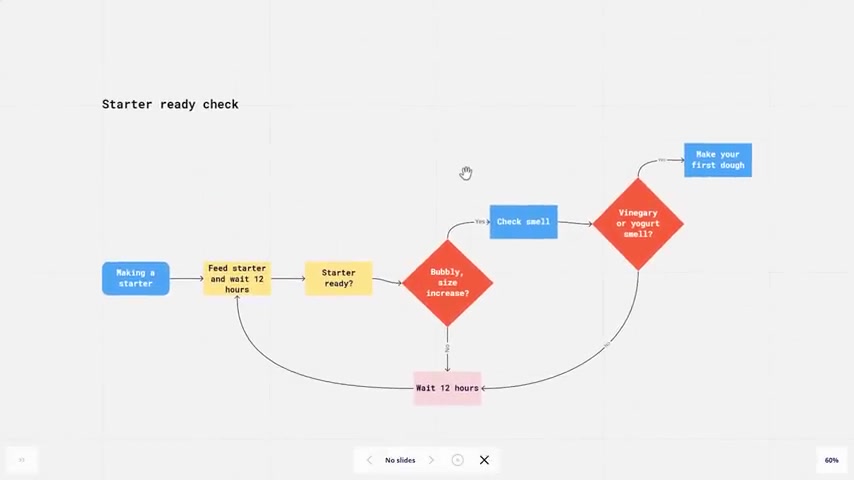
But , yeah , read the signs of your stutter .
That's the best thing that you can do around 12 hours after you fed your stutter .
You can check whether your stutter is ready .
Is it bubbly ?
Did it increase in size ?
If it didn't wait 12 hours and then proceed and feed it again just like you did before ?
Now , if it's bubbly , it still could be that you don't have achieved a good balance of yeast and bacteria smell a bottle of vinegar or a yogurt .
That's what your starter stutter should smell like .
If it's too strong , it might be that your balance is still a little bit off , then just proceed and feed your stutter again after 12 hours .
If it's mild and subtle and you can really smell that yogurt or vinegar , then you're ready .
You're about to make your first bread though .
Congratulations .
Now , my favorite trick , you just make your sourdough starter .
It's ready .
But if you have time , please bear with me for just a few more days .
Let's convert our sourdough starter into a stiff starter .
Now , especially if you're new to baking , using a stiff starter later is gonna be so much easier for all recipes that you previously used yeast .
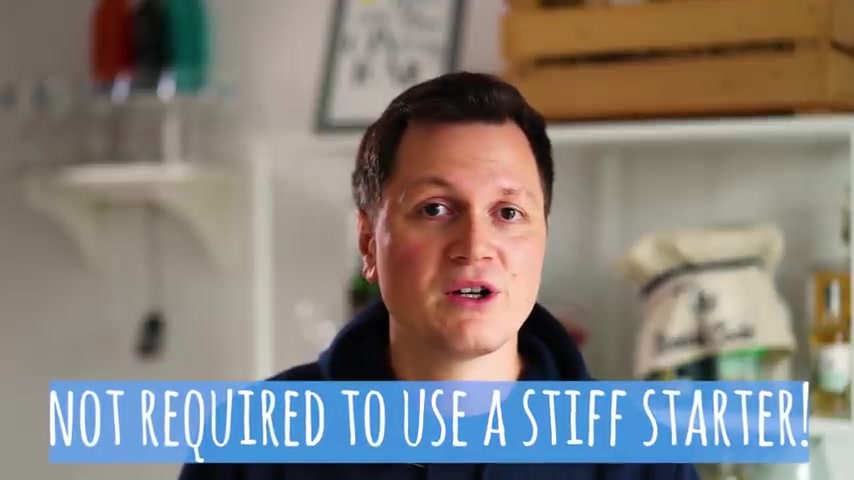
You can now use the stiff starter .
It's definitely a game changer .
I in fact made a full video on the topic , but this is the too long , didn't watch if you don't want to use this stiff starter .
That's totally ok too .
Especially if you know what you're doing .
If you're a beginner dough , then this is gonna make things so much easier .
You'll be able to make bread with every flour that you have even low quality , low gluten flour .
Every flower is gonna work with a stiff stutter .
Definitely a game changer .
If you ask me a stiff sowder Sutter is amazing because it boosts the yeast activity .
Your final dough won't be as sour .
The more bacteria you have the faster they munch your gluten resulting in a sticky dough .
This is the worst enemy of every home baker called over fermentation .
This is the biggest mistake ever .
Everybody makes and by making a stiff stutter , you can bake with the cheapest flour that you find and you won't run into issues of over fermentation .
It's such a game changer .
That's why if you're new to starter baking , I definitely recommend you to make a stiff stutter .
I'll be sharing a couple of more resources on this topic in the description of the video .
Definitely a worthy read for you .
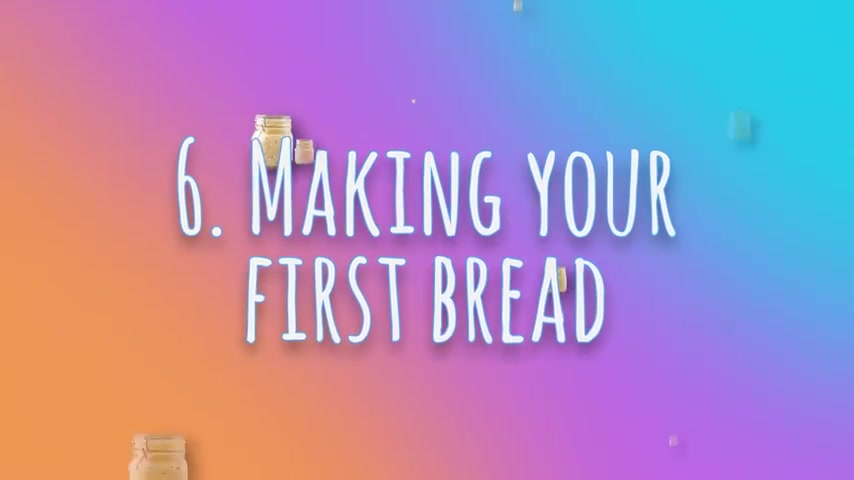
So to convert your stutter into a stiff starter , this takes around three days .
You will take 50 g of flour , 10 g of your stutter , 25 g of water .
Previously , you always had a ratio of 1 to 1 .
Now , you have 50 grams of flour and 25 g of water .
That's a 50% hydration .
24 hours later , you take 10 g of that previous day , mix with 25 g of water and another 50 g of flour .
The rest that you don't need .
You start in a large jar in your fridge .
This is what we call your discard .
Never throw this away .
This is precious gold .
Again , there are going to be more resources on this topic in a description of the video 24 hours later .
Repeat exactly the same thing .
Gerardo Starter's microorganisms are going to adapt in this different environment .
The yeast is going to thrive the bacteria is a little bit slower and that you're ready flip over your starter Sutter .
You should be seeing a couple of pockets of air .
Also , please note how the smell of your starter has just changed just by changing the amount of water that you're using .
Isn't that mind blowing ?
You're gonna make an amazing first bread .
Are you excited ?
Because now that your starter is ready ?
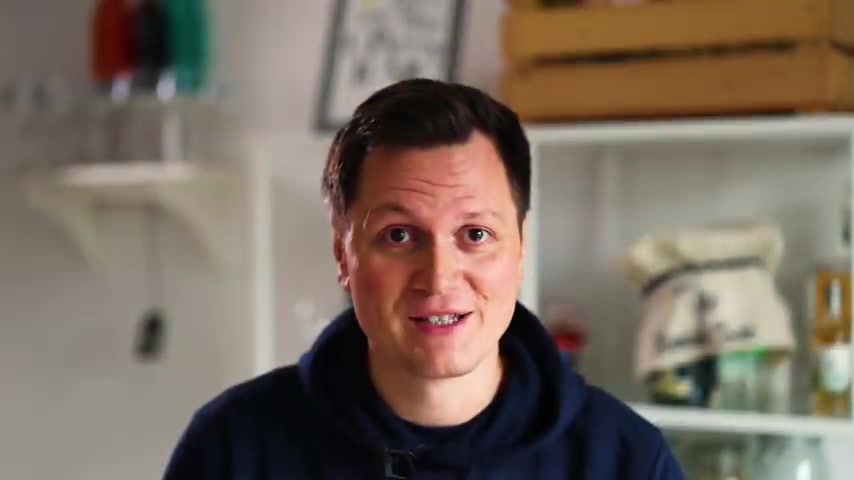
Let's make our first bread .
The ingredients of your bread are super simple flour , water and salt .
That's about it .
So for a typical bread , that's around 400 grams of flour .
240 g of water , 8 g of salt and 40 to 80 g of sourdough starter .
So you just made your first dough and to make an actual bread out of it , I'm gonna be sharing my favorite recipe in the description of the video .
And up here you are going to loaf your bread no matter what you're making , making something with sourdough is gonna improve the taste dramatically .
You'll make everyone around you super happy .
So the quantity of sourdough starter that you should use depends on your ambient temperature .
This is a really good rule of thumb .
It's warmer than 22 degrees Celsius or 70 F in your kitchen .
If yes , you're going to be using around 10% stutter based on the weight of your flour .
If it's colder , that's for me in wintertime , that's around 20% based on the flour .
Then this is the recipe for your first loaf of bread .
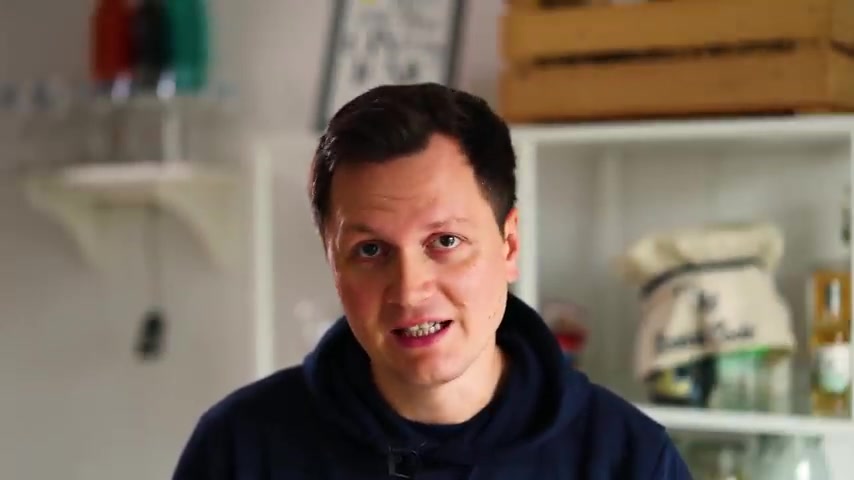
400 g of flour , 240 g of water , either 40 g of stutter or 80 g of stutter .
And then 8 g of salt .
If it's way hotter where you live , consider you're just using 5% of stutter .
Your stutter is going to regrow instead of your main dough because your bread dough is pretty much a gigantic sourdough stutter if all went .
Well , you just made your first bread .
Now , the question is , what do we need to do for maintenance ?
How do we prepare for the next bread ?
Let's have a look at that in detail .
Now and for that , it depends a little bit .
Did you deplete all your stutter ?
If Yes , no worries .
Just extract a tiny bit of your bread dough .
That's going to be your next stutter .
If not take all but not more than 10 g of your stutter that you use to make the bread dough .
Feed it again with 50 g of flour and 25 g of water .
And now do you want to bake the next day ?
Then around 8 to 12 hours later , you can make your next bread though .
Do you plan to bake in the next two weeks ?
If yes , store your stutter inside of the fridge afterwards , you need to refresh it one more time .
If not , do you have a freezer ?
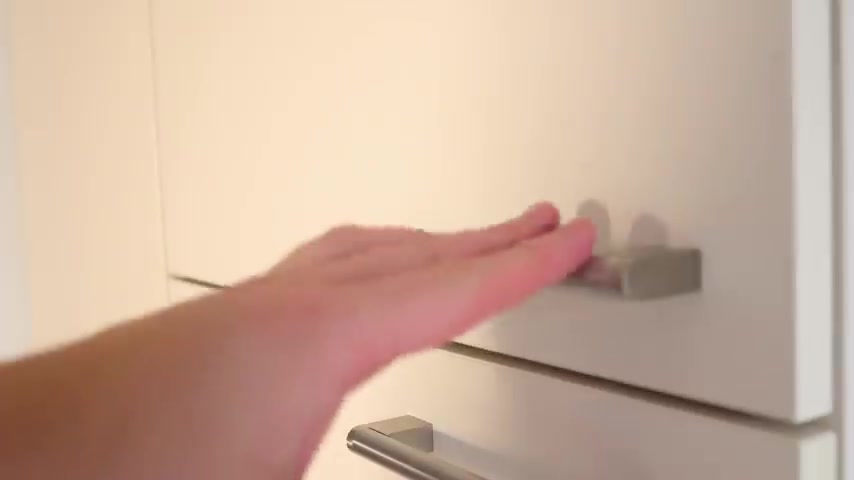
If so store your sole soter in the freezer .
If not dry your stutter , then reactivation is going to take a little bit of time .
Then you have the perfect balance of yeast and bacteria .
Again , I'm going to be linking all the flow charts in the description of the video as well .
First resource that I want to share with you is it's my default Sardo bread recipe .
It will make you an excellent bread .
It takes a little bit more work if you don't have that much time and only three minutes to spare .
The next resource is my three minute amazing sdo bread .
Then on my blog , I wrote a blog post on different sourdough stutter types with all the details .
It goes on much more lower level expanding you , the microbiology of your stutter .
It helps to understand what's going on next up .
When feeding your starter , you typically always have a little bit of this card starter at the start .
We toss some of it away , but then afterwards we use whatever leftovers we have and we store them in the fridge .
This is flavor explosion .
So please try making my discard stutter bread .
It's an amazing bread that has superb flavor .
You can also make really nice sour crackers out of your discard stutter .
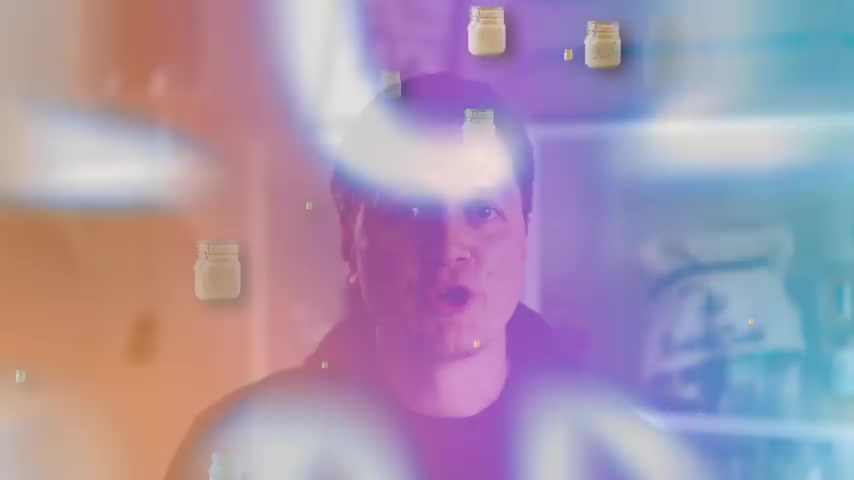
Very delicious as well .
Another crazy idea is to make pasta out of it .
You can make sourdough pasta , very delicious .
Sharing the link to the recipe as well .
And lastly , if you have questions , we have a free Discord community with lots of bakers from the channel .
Feel free to join and ask your question questions over there .
And now comes my special surprise that I promised you being a total nerd .
I like to take my starter with me .
My starter is named Bret Pitt .
I take him wherever I travel to because I want to collect wild yeast and wild bacteria from all around the world .
My starter has visited several countries so far .
So please enjoy some footage of my starter traveling .
Please let me know in the comment section which questions you have because I'll be doing another video with frequently asked questions .
Hope you had fun and made the gluten be with you Welcome to the Sour World .
Are you looking for a way to reach a wider audience and get more views on your videos?
Our innovative video to text transcribing service can help you do just that.
We provide accurate transcriptions of your videos along with visual content that will help you attract new viewers and keep them engaged. Plus, our data analytics and ad campaign tools can help you monetize your content and maximize your revenue.
Let's partner up and take your video content to the next level!
Contact us today to learn more.